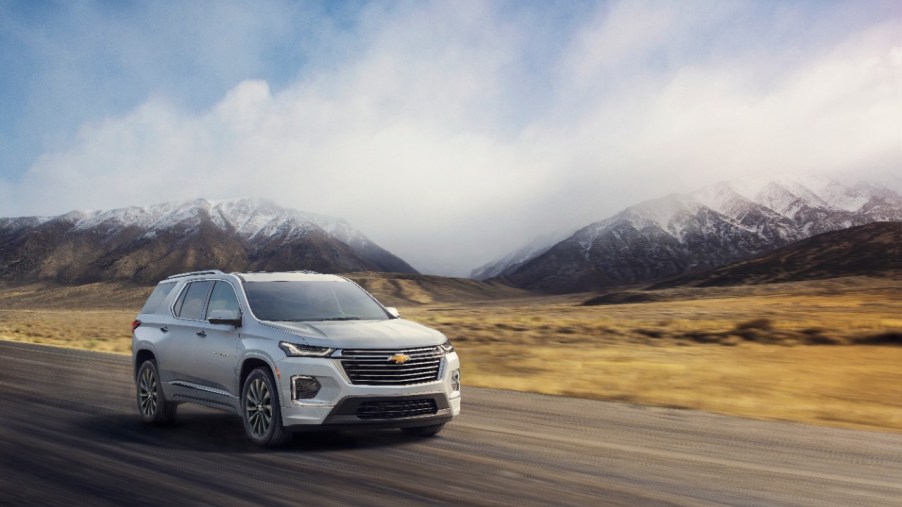
Forget the Chevy Tahoe, the 2023 Chevy Traverse May Be the Better SUV
The Chevy Traverse gets lost between the cool two-row Blazer and the giant Tahoe, but it offers a lot of value and utility in the crowded three-row world. It’s a bit smaller than a Tahoe, but that smaller size doesn’t mean it’s small on capability compared to its bigger brother. The Traverse has nearly as much cargo-carrying ability as a new Tahoe, can tow quite a bit, and you can get every option under the sun for $20,000 less. But is it worth it?
The Tahoe is on a newer platform than the Traverse
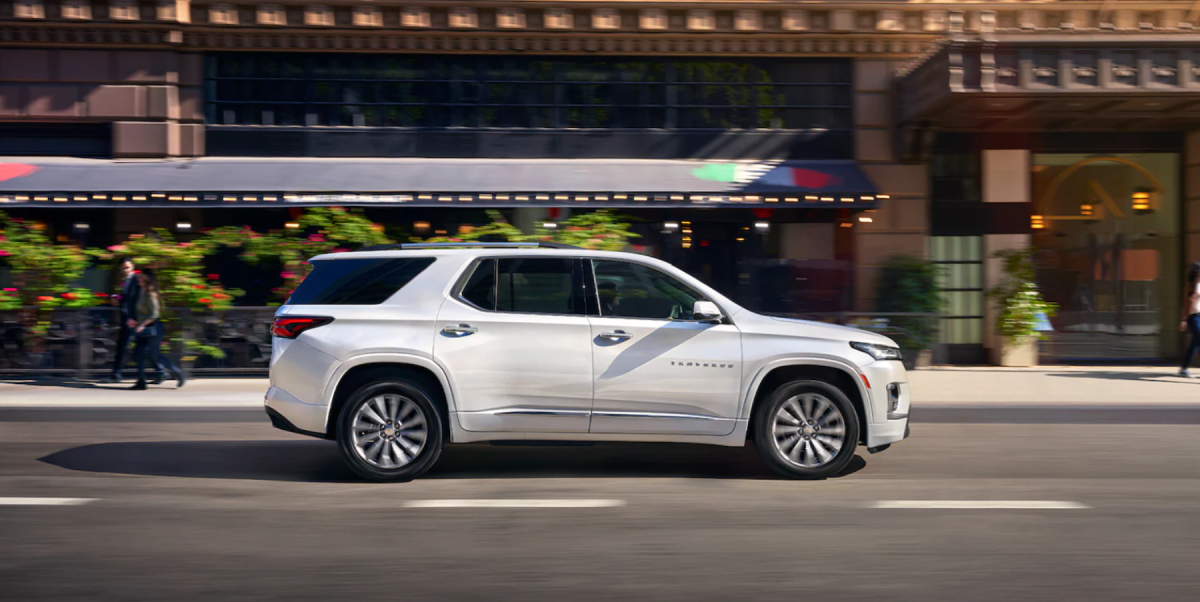
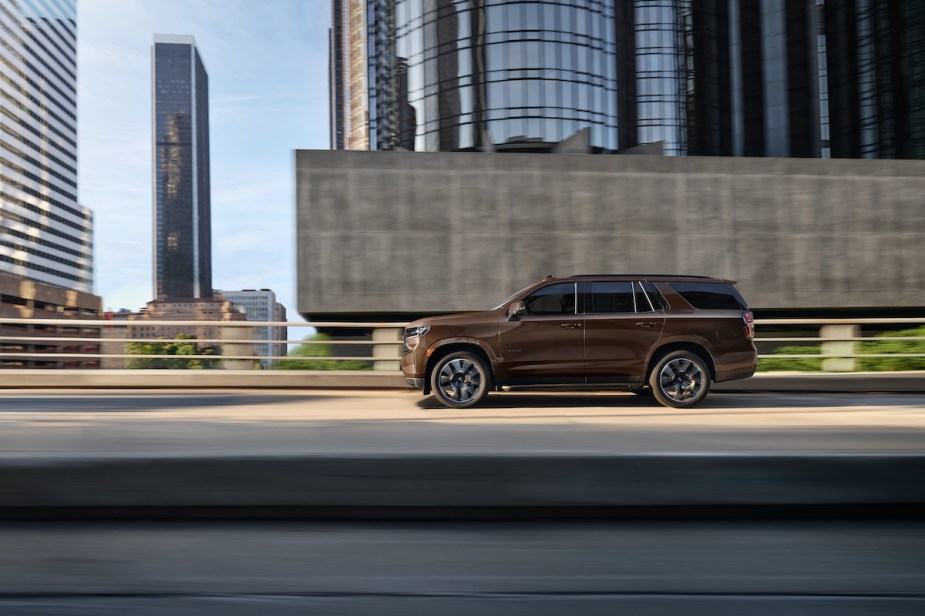
The Traverse platform has been around for a while. The second-generation Traverse launched for 2018, while the Tahoe was new for the 2021 model year. Basically, if you like a super traditional SUV with a big V8 (or diesel), with truck-like steering, and maneuverability, pick the Tahoe. If you prefer a more car-like ride and don’t plan on venturing too deep into the woods, pick the Traverse.
The two have one critical difference
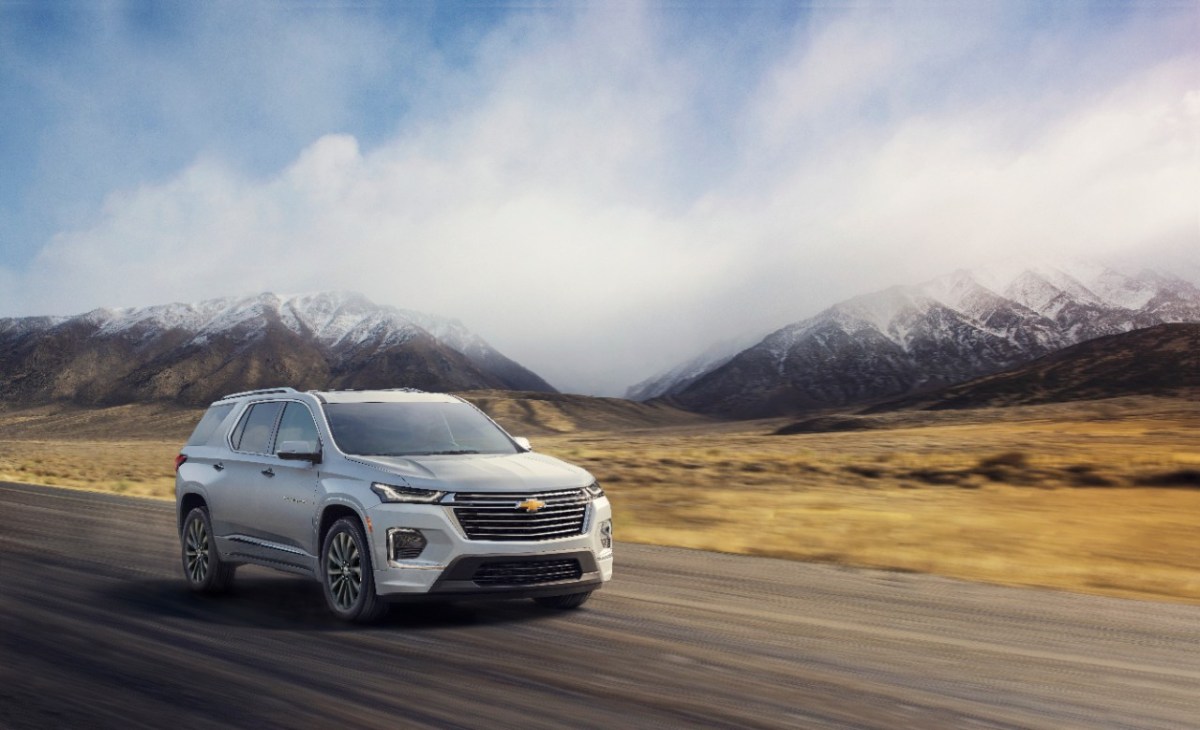
The Traverse is, technically, a crossover because it’s built on a unibody frame, like a car. The Tahoe on the other hand is built like a truck, with a body-on-frame design from a Chevy Silverado truck.
The big advantage of the Tahoe, therefore, is in towing. Because it’s based on a truck, it can tow up to 8,400 pounds like a truck. The Traverse is no slouch, however, and it can up to 5,000 pounds with an available towing package. Most small trailers weigh less than 5,000 pounds.
The Tahoe is big. Really big.
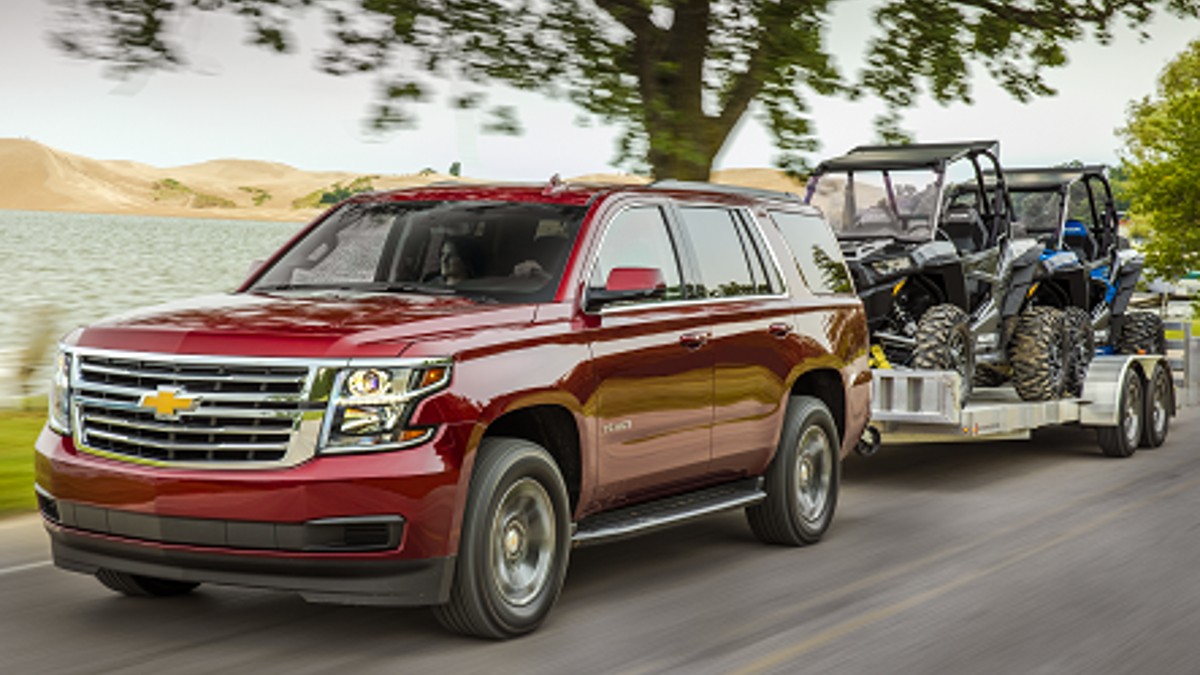
The Traverse’s more aerodynamic-looking styling hides its size better than the chunky Tahoe’s does. The Tahoe eclipses the Traverse with its long, and wide, body that is 205 inches long and 81 inches wide. Check your garage before you try to park one of these behemoths in there. The Traverse, however, isn’t really much shorter. It’s 205 inches long, and its just three inches narrower.
However, those extra inches do add up on the inside of the Tahoe. IT can hold a massive 123 cubic feet of stuff with the seats folded, whereas the Traverse can hold 98.1 cubic feet of stuff with the rear seats folded. The third row of the traverse has 33.5 inches of legroom, while the Tahoe gets an extra 1.5 inches back there.
The Traverse has one engine option, the Tahoe gets several
The full-sized Tahoe gets big engines including the 5.3-liter 355-horsepower V8, the mighty 6.2 liter V8 that makes 420 horsepower, or a diesel. All Tahoes get a 10-speed automatic. The Traverse gets only a 3.6-liter V6 that makes 310 horsepower. But, before you say the Traverse is slow, keep in mind that it weighs about 1,100 pounds less than a two-wheel drive Tahoe, at 4,310, which means it keeps up with traffic just fine thank you.
The Traverse, too, gets better ratings from J.D. Power.
The Tahoe is about $20,000 more than a Traverse
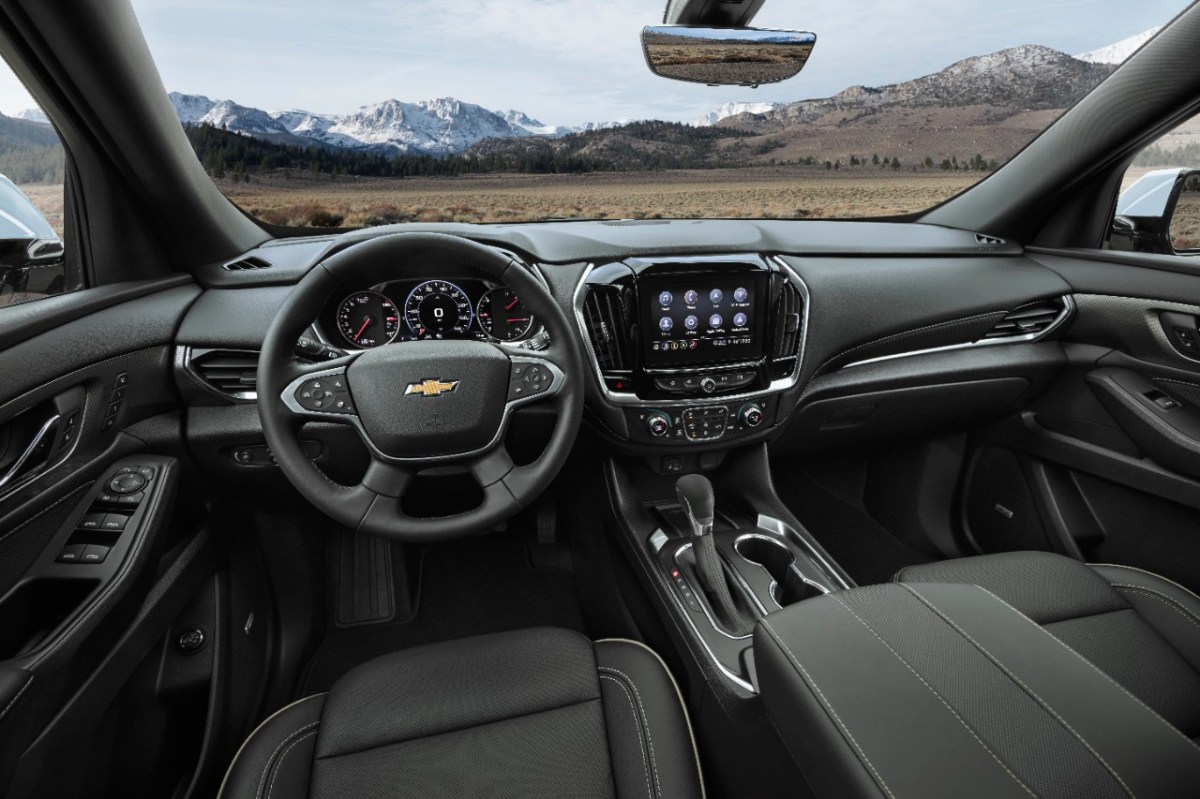
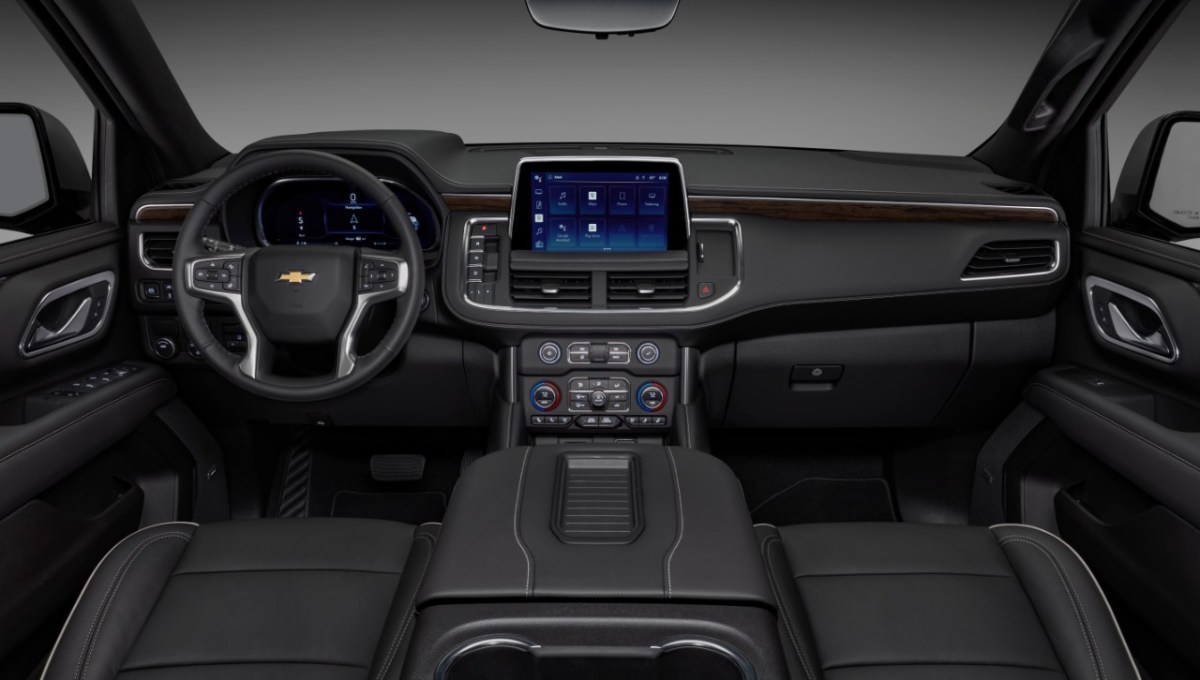
The Traverse starts at $34,520 in base trim and for the price of a base Tahoe you can snag a fully-loaded High Country Traverse that every open Chevy offers, like multi-zone A/C. The mid-level LT and RS trims, however, pack a lot of value and style for about $44,000. The RS trim has 20-inch rims and a cool black-out package that gives a sinister on-road look. AWD is a $2,000 option.
The Tahoe starts at $54,200 for the base LS. But if you want the goodies that the Traverse gets, you’ll have to step up to the $65,000 LT trim that adds a larger screen, better stereo, and a hands-free liftgate. The Z71 package adds an 0ff-road suspension that, unlike in the Traverse, means you really can bash around off-road. Four-wheel drive is a $3,000 option.


